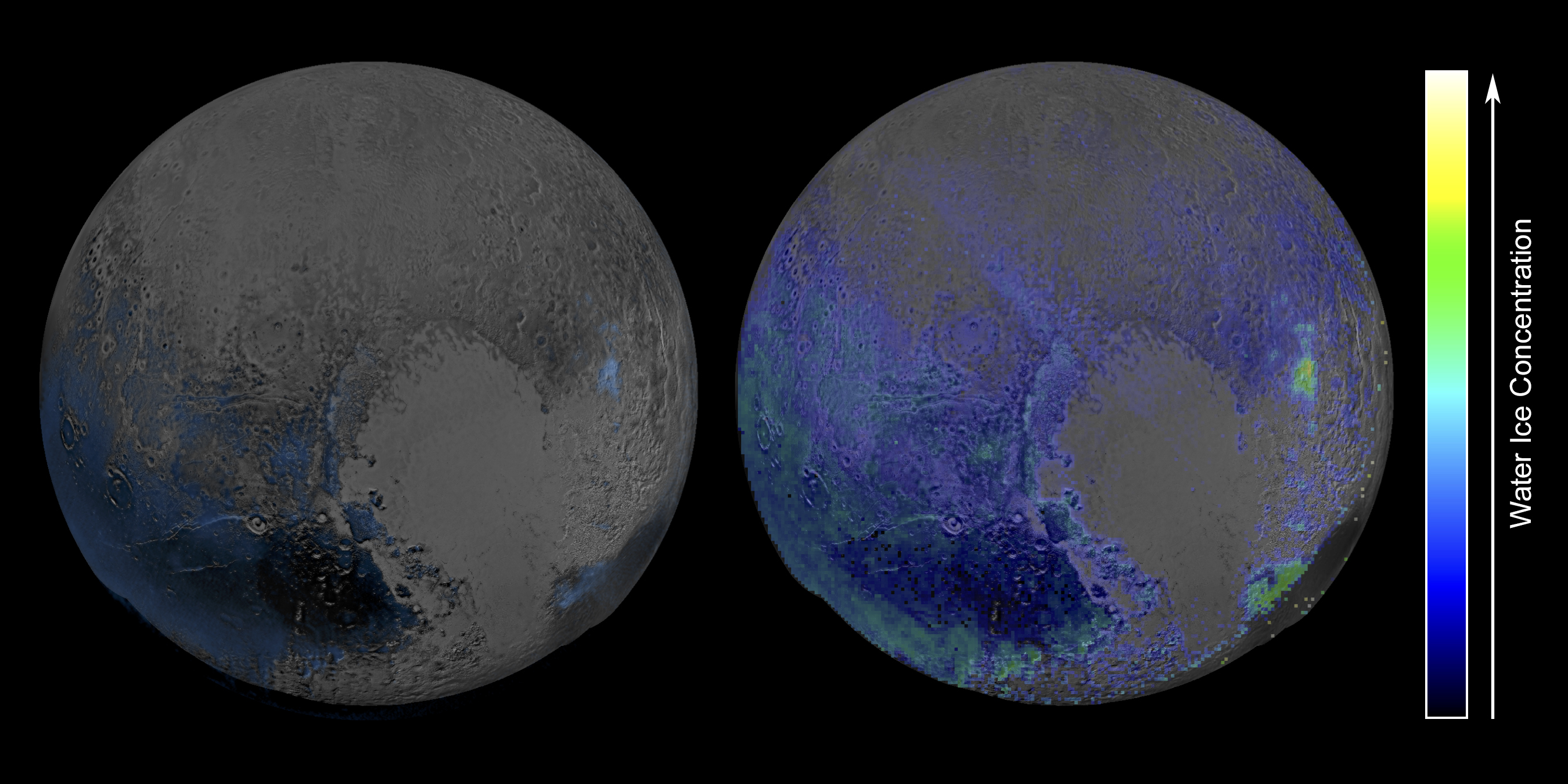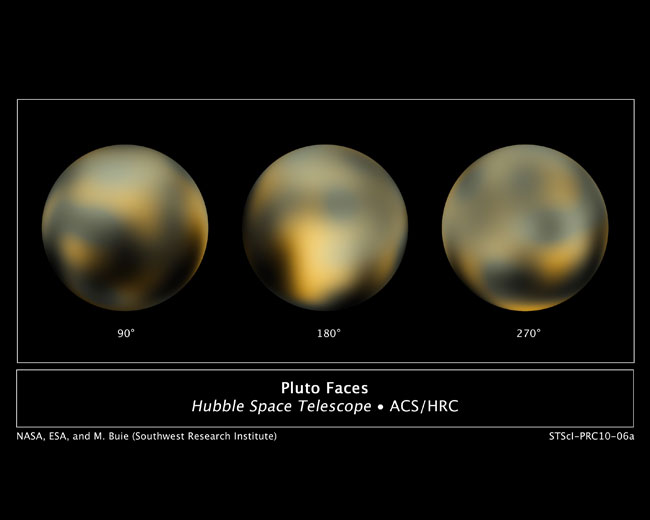
Water ice is surprisingly abundant on Pluto's surface, a new map of the dwarf planet reveals.
Scientists created the map using data collected by NASA's New Horizons spacecraft during its epic flyby of Pluto last July.
The new map is more sensitive than an earlier version also produced using flyby observations, and thus shows more water ice — the dwarf planet's bedrock material — cropping up across Pluto's surface than had been seen previously, NASA officials said.
"But despite its much greater sensitivity, the map still shows little or no water ice in the informally named places called Sputnik Planum (the left or western region of Pluto’s 'heart') and Lowell Regio (far north on the encounter hemisphere)," NASA officials wrote in a statement Thursday (Jan. 28). "This indicates that at least in these regions, Pluto's icy bedrock is well hidden beneath a thick blanket of other ices such as methane, nitrogen and carbon monoxide."
New Horizons zoomed within just 7,800 miles (12,550 kilometers) of Pluto on July 14, 2015, returning history's first up-close looks at the dwarf planet and its five moons.
The new and old water-ice maps were both made using infrared-light observations captured by New Horizons' Ralph/Linear Etalon Imaging Spectral Array (LEISA) instrument, at a distance of about 67,000 miles (108,000 km) from Pluto, NASA officials said.
New Horizons is currently zooming toward a small object about 1 billion miles (1.6 billion km) beyond Pluto called 2014 MU69. If NASA approves and funds a proposed extended mission, the spacecraft will study 2014 MU69 up close on Jan. 1, 2019.
Get the Space.com Newsletter
Breaking space news, the latest updates on rocket launches, skywatching events and more!

New Horizons is also still beaming home the many photos and measurements it captured during the July 14 flyby. All of the close-encounter data should be on the ground by this coming fall, mission team members have said.
Follow Mike Wall on Twitter @michaeldwall and Google+. Follow us @Spacedotcom, Facebook or Google+. Originally published on Space.com.
Join our Space Forums to keep talking space on the latest missions, night sky and more! And if you have a news tip, correction or comment, let us know at: community@space.com.

Michael Wall is a Senior Space Writer with Space.com and joined the team in 2010. He primarily covers exoplanets, spaceflight and military space, but has been known to dabble in the space art beat. His book about the search for alien life, "Out There," was published on Nov. 13, 2018. Before becoming a science writer, Michael worked as a herpetologist and wildlife biologist. He has a Ph.D. in evolutionary biology from the University of Sydney, Australia, a bachelor's degree from the University of Arizona, and a graduate certificate in science writing from the University of California, Santa Cruz. To find out what his latest project is, you can follow Michael on Twitter.









